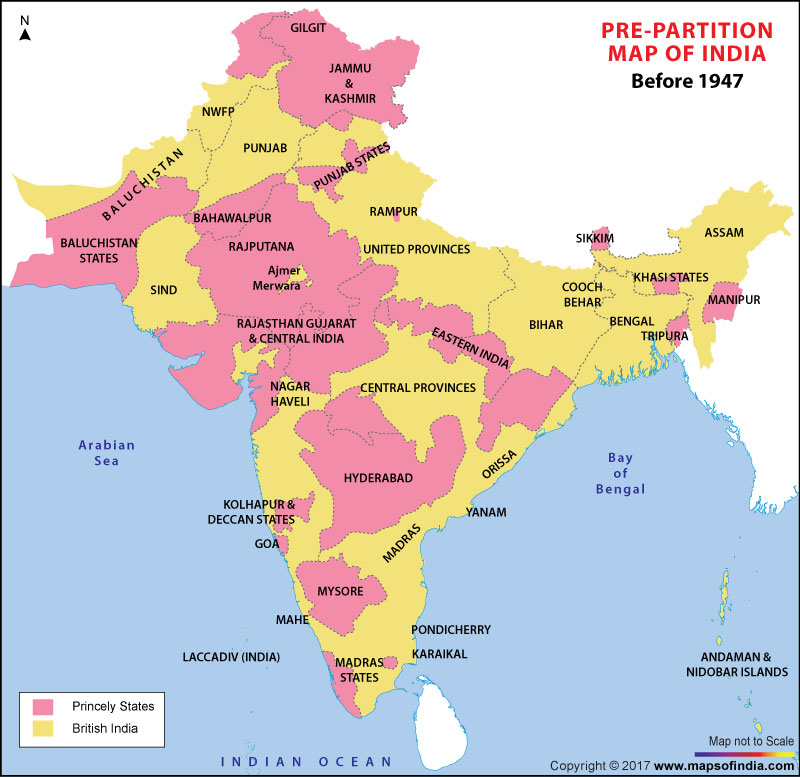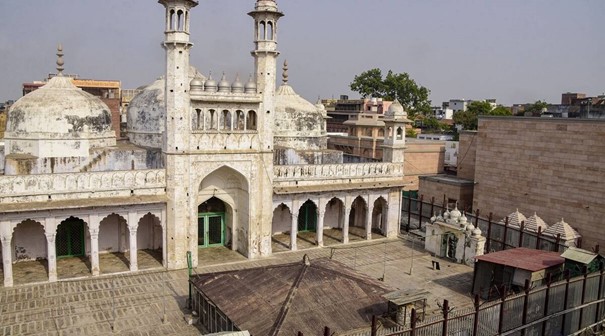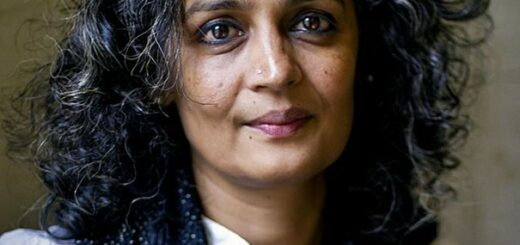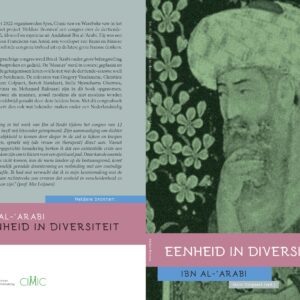Na de Babri Masjid in Ayodhya (1992), nu de Gyanvapi-moskee in Varanasi
In het volgende artikel waarschuwt Ashok Gladston Xavier voor de toenemende religieuze intolerantie in India. Hij schetst geen fraai beeld van de Indiase politiek sinds 2014, d.w.z. sinds premier Narendra Modi en zijn regeringspartij, de BJP (Bhartiy Janta Party, de Indiase Volkspartij) aan de macht zijn.
De bij ons nog steeds onbekende leiders zoals Ambedkar en Periyar voorspelden begin vorige eeuw al wat er zou gebeuren als men na de onafhankelijkheid van India een identitaire staat zou willen maken.
De regerende BJP heeft al sinds 1991 de nationalistische kaart getrokken en lukt daar alleen in door de hindoegevoelens te bespelen tegen de binnenlandse vijand, die meer en meer de moslims zijn.
Een voorbeeld waar Ashok naar verwijst is de Babri Masjid-casus. Die moskee in Ayodhya werd in 1992 door een gigantische, opgezweepte menigte afgebroken omdat hij in 1528 zou zijn gebouwd op een tempel van de god Ram, die volgens het verhaal op die plek was geboren. Er vielen toen duizenden doden.
Decennialang probeerden de hindoenationalisten er een nieuwe Ram-tempel te bouwen. Pas op 9 november 2019 besliste het Hoger Gerechtshof dat er een hindoetempel mocht komen en dat de gesloopte moskee mocht worden herbouwd in Dhannipur op 30 km van de plaats waar hij oorspronkelijk stond. De werkzaamheden startten in 2021, 30 jaar na de vernieling.
Ashok vreest dat de Gyanvapi-moskee in Varanasi nu eenzelfde lot beschoren is en dat zowel het grondwettelijk ‘secularisme’ als de Indiase ‘democratie’ in gevaar komen.
Growing religious intolerance in India
Hate, intolerance, xenophobia, racism, fundamentalism, casteism, extremist nationalism, monoculturalism, ethno-centrism have often been used in the history of the world to mobilize communities. These terms have resulted in rallying support against political orders and overthrow power and establish new orders.
In the process this has resulted in ethnic cleansing, crime against minorities, atrocities against women and children and marginalization of helpless communities triggering large scale internal and external forced migration and gross insecurity.
Historically it has been observed that there has been a need for an emotional platform to gather people. It has been done in the name of nationality, language, race, religion, and many others. Among all this the immediate ticklers that capture the imagination are those that are associated with a community’s identity.
A reinforcement of an identity gives a sense of pride and helps to set aside other deep-rooted differences albeit temporarily. There is a new identity that is formed with an agenda that is convincingly agreed upon to take forward the new ideals.
History is fraught examples of such incidents. Such enterprises have led the world to immeasurable destruction. Many lessons are learnt from these experiences and sadly the positives are conveniently ignored. The same or similar strategies are used to repeat, reinforce the non-existent identities to generate enthusiasm and compel people into hateful actions with full conscience.
India is a classical case study for emergence of identities
A cursory scan of the last hundred years will easily outline the techniques used to raise the collective conscience of the people. When the common enemy was the British Empire, people took a new identity of Indians and stood behind the struggle. These people had moderate and extremist ideologies but mounted behind the banner of independence.

While this was happening there were a few like Dr Ambedkar and Periyar who also looked at the microlevel future forecasting what would happen after independence was achieved. And sadly, that they foresaw became real.
Even during the run up to independence one of the major problems that kept festering was the idea of intolerance to the Muslims. The historic Hindu-Muslim riots of Bengal, the Partitions Riots that displaced millions of people, Gandhi’s plea for tolerance of religions are reminders of what happened in the past.
In post-independence India, with the emergence of a secular constitution the hope was to realize the dream of a religiously unaffiliated and tolerant country. Though the majority of the country has remained true to this ideal for the last 75 years. There have been sincere attempts to change this secular fabric of the nation with planned rubrics. In order to bring about regime change and capturing political power much has happened in the last 40 years.

This cannot be done without the identification of new enemies. In this case it was convenient to use the Muslims as the obvious target. The Babri Masjid, a mosque constructed in the 16th century was claimed to have been constructed on a Hindu shrine in Ayodhya, considered as the birthplace of Ram became the symbol marshaling people in the name of Hinduism.
The emotional frenetic speeches turned ordinary hindus to become militant supporters of the cause. The use of systematic Gobbelesian techniques to retell stories and reinforce the myths as realities resulted in people bringing down the mosque. In less than a decade later the party that was responsible for the demolition of the mosque was in power.
One would imagine that the hate would end with that, but this was only the beginning. Thanks to the performance problems they were voted out and kept at bay for a decade. In 2014 they bounced back to power with the same agenda, the only difference this time was they were in full majority. The agenda this time was to remain in power.
The many ways to achieve this is to show people that they are committed to the agenda of Hinduisation of the nation. Any departure from this would be seen as betrayal of their poll promises. The seeds of hindu pride were systematically sown with the help of reinventing myths on one side and identifying practices and symbols as anti-hindu and anti-national. A careful weaving of cow politics, mosque’s locations, hijab, triple talak, and so on are just a few avenues that enable the common people to practice their hatred.

With so much of ideological pounding, now people take pride in hating. The very definition of Hindu is changing. In the current scenario, you can be a true Hindu only if you can hate a Muslim.
The justification given is that since a majority the people in India are Hindus, it is a Hindu country and one can remain a Muslim in only by accepting Hinduism. This goes against the fundamentals of the secular constitution. Since that is a problem, there are efforts made to change the tenets of the constitution.
This intolerance has now grown past the political power-seeking schema. It is penetrating into the local communities and disrupting the cordial communal relations. The society that is already divided by caste is further fragmented by religion with a new religious colour.

The news of a mosque that Gyanvapi Mosque in Varanasi one of the oldest cities in India is the latest flashpoint. This mosque is claimed to be constructed in 1669 by destroying a Vishwanath temple on the orders of Emperor Aurangzeb the sixth Mughal ruler.

A few weeks ago, a few Hindu devotees approached the local court demanding the right to worship in a shrine behind the mosque citing that they had found a shaft that represented the erstwhile Shiva linga that represented the existence of the temple before the mosque. This new claim is now drawing national attention.
A part of the mosque has been shut without giving a chance for the Muslims to explain their case. (Southik Biswas, BBC news). After weeks of controversy the courts may give a chance to tell the Muslim side of the story. This sounds so familiar to what happened 30 years ago in the Babri Masjid case. This case could definitely become another defining moment in the polity of India.
Claims such as these have been growing all over the country only to hurt its secular fabric. The result of the growing intolerance using contentious claims not only strengthen lumpen elements but also create an insecurity for the minorities who depend on the state for their protection.
Ashok Gladston Xavier
Ashok Gladstone Xavier is associate professor in social work at Loyola College, Chennai, Tamil Nadu, India
s




